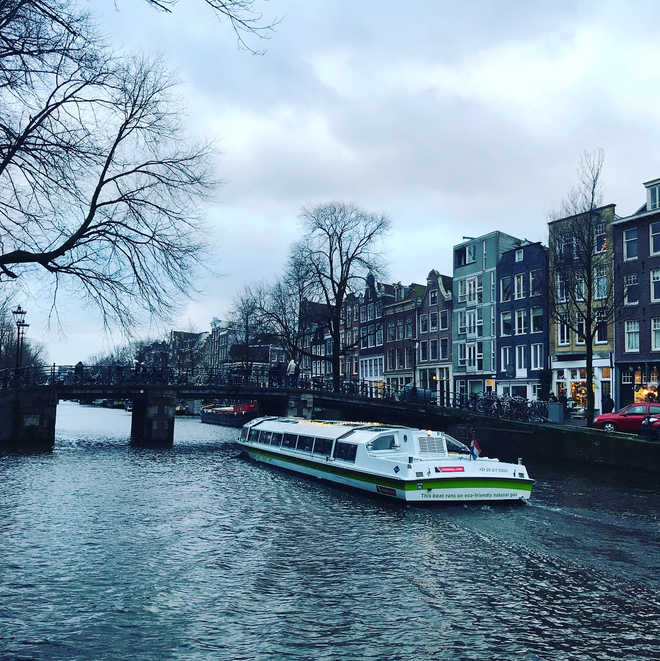Between hope and despair
Vasudha Sahgal
A few days before Anne Frank turned 13, she had pointed to an ‘autograph’ book in the display window of a store in Amsterdam while on a stroll with her father. Shortly after, Anne, her mother Edith, father Otto and elder sister Margot were forced into hiding to escape the Nazi party’s horrific capture and persecution. The Anne Frank Museum is on a canal called the Prinsengracht in central Amsterdam.
The building is where the Franks, along with another family, the van Pels — Hermann and Auguste and their son Peter — hid for two entire years, beginning July 1942. They were later joined by Fritz Pfeffer, a dentist and friend of the family.
The facade of the building is unassuming, passing off as any other office space. The queue to the Anne Frank museum winds around the building. The surroundings — a canal, a nearby church and a pancake bakery down the road are cheerful. And then, the cruel irony of it hits you hard — how eight innocent people, fearing for their lives each day, had to languish in the annex of a building, unable to enjoy even a minute of the outside beauty.
The line moves quickly and soon you are in the building where Otto Frank’s company worked. Here Otto decided to hide his family, only confiding in a few helpers who would bring them their food and supplies.
As one enters, quotes from Anne’s diary decorate the room’s walls. A moveable bookcase conceals the secret annex that Anne Frank’s family and others hid in. Files and folders dating back to the time still sit on the shelves.
The bookshelf is the first reminder of the the sheer desperate discretion that the families had to observe, to conceal their whereabouts, so as to avoid the precarious and perilous situation, in case of being found.
Making your way on the ladder-like staircase, one wonders how eight people lived, confined in such close quarters. Anne’s frustrations, hopes and precociousness are documented in the pages of her diary — the autograph book that was gifted to her by her father before they went hiding.
The same pages, in Anne’s handwriting, are displayed behind glass cases in the building.
Anne’s room, which she shared with one other, has a writing desk and posters on the walls. The posters are a mix of celebrities, children and art, which seemingly give an uplifting mood. Anne mentioned in her diary how she wanted to be a famous writer and the posters could well be an inspiration for her writing or aspirations for the future.
As one moves from room to room, in the secret annex, which is almost like a labyrinth, one gets a feel of the stifling, enduring conditions of the eight people, who couldn’t even pull the toilet flush in the singular bathroom during the day, when the workers worked in the warehouse underneath, for the fear of causing an alarm.
The kitchen, documents menu’s, written by the inhabitants; there’s a checklist of supplies written by Auguste van Pels. These serve as a reminder of the day-to-day activities and possibly events to look forward to.
As one exits one of the rooms, there is an attic, which is now closed for visitors. Specks of sunshine shimmer through. In her diary, Anne mentions how she and Peter van Pels would very quietly sneak into the attic, to enjoy the glimmer of sunlight, in the otherwise closed and confined annex.









